Case Study
Second Desk
Overview
Second Desk is a Desktop-As-A-Service product that enables non-Windows users to stream Windows programs directly through their browser. This project will provide a solution for Chromebook and Linux users that can’t run work/school required Windows programs on their personal computers.
**Content shown is from earlier versions of the product/business.
Tools & Roles
Project Management, UX/UI Design, Frontend Development
- AWS
- CloudFlare
- Electron
- Figma
Background
With the massive growth of Chromebooks in recent years, particularly in the field of education, more and more students are using them to do their schoolwork. But after realizing how limiting a Chromebook’s app library can be, a lot of them end up frustrated and with very few options.
I started Second Desk as a way to provide Chromebook users with a more robust computing experience, without having to purchase a new Windows or Mac machine. We’re focusing on a niche target audience with a specific problem to fix.
Product Strategy
Competitive Positioning Analysis
To understand our place in this growing market, we compared ourselves to a variety of Desktop-As-A-Service (DAAS) products ranging from enterprise-focused offerings to more consumer-grade ones. We found that there were very few companies who had products that both catered to individual consumers and offered a relatively low price point.
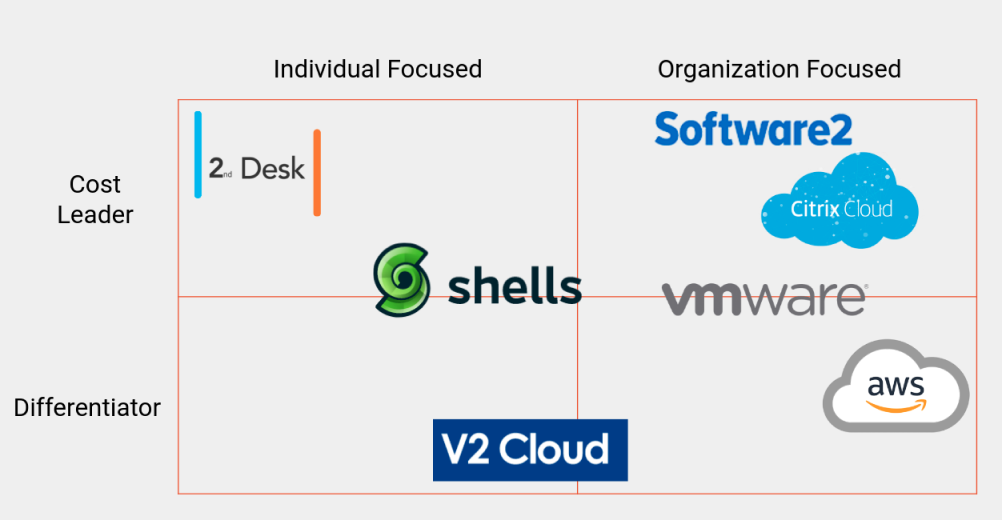
We found that there were very few companies who had products that both catered to individual consumers and offered a relatively low price point.
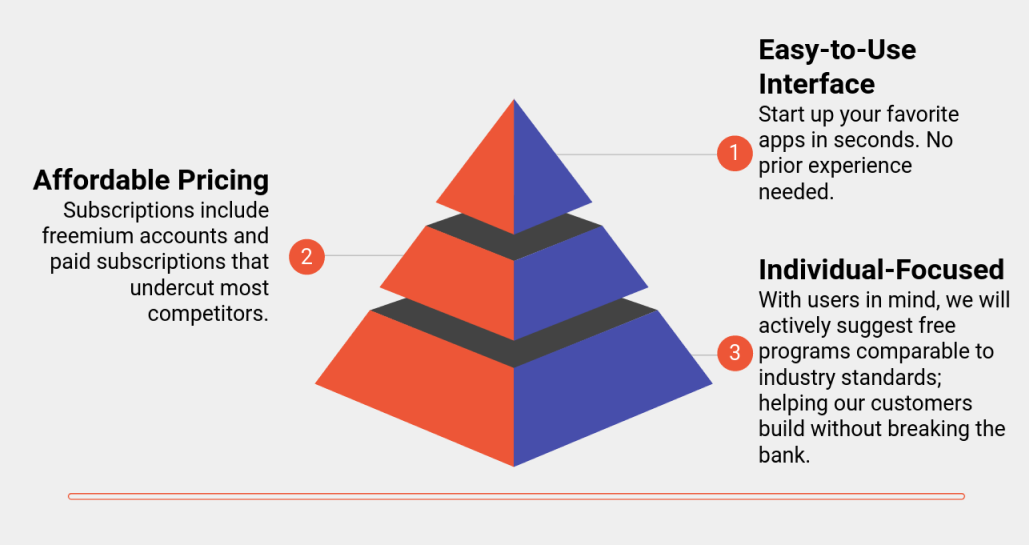
Product Offering
At the moment, we’re still in the customer discovery phase. Our current concept of an MVP is subject to change as we continue learning more about the problems about users face. That said, we believe a potential solution is to stream a remote Windows server and its applications directly through the user’s browser. This approach has both pros and cons when compared to a common existing solution:
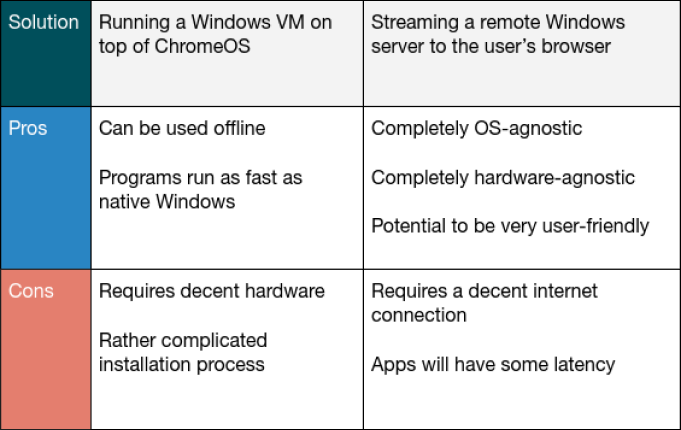
After comparing these two approaches, we felt that ours did an excellent job of addressing our user’s issues, mainly a low price point and high ease-of-use. Because requiring a decent internet connection could be a challenge to some users, it will be an important area to test while we build our MVP.
UI/UX Design
Empathy Interviews
Being the only UX Designer on the team, it was my responsibility to establish a user-centric approach in my team. I used a few methods, which you can see below, to help put them in our audience's shoes.
First and foremost, it was important to conduct interviews and collect data to work from, so we could have an idea of where to start. I wanted to understand common challenges our target audience faced while working on their computer(s); these were the questions I asked and the criteria used for participants:
- What is your occupation/major?
- How old are you?
- What is your current computer situation? Do you own one or do you share\lease?
- What do you regularly use it for? (school, work, personal; where do you use it; what apps do you typically run)
- What challenges do you face while using a computer? How does this make you feel?
- Is there any way in which you feel these challenges could be resolved? Is there anything stopping you from solving these challenges yourself?
Target participant characteristics:
- Ages 12-24
- High school and college students
- Mainly Chromebook users
- Include participants of different majors
- Include participants of different genders
User Personas
These are the first personas that were made from the data we gathered. Of course, as we are constantly conducting more interviews and revising our work, updates will be made when new content is available.
We found that our interviewees were were often more creative-focused in terms of current/preferred major, were on tight budgets and couldn't afford a more expensive Mac or PC, and were frustrated at having to switch between devices to get their work done.
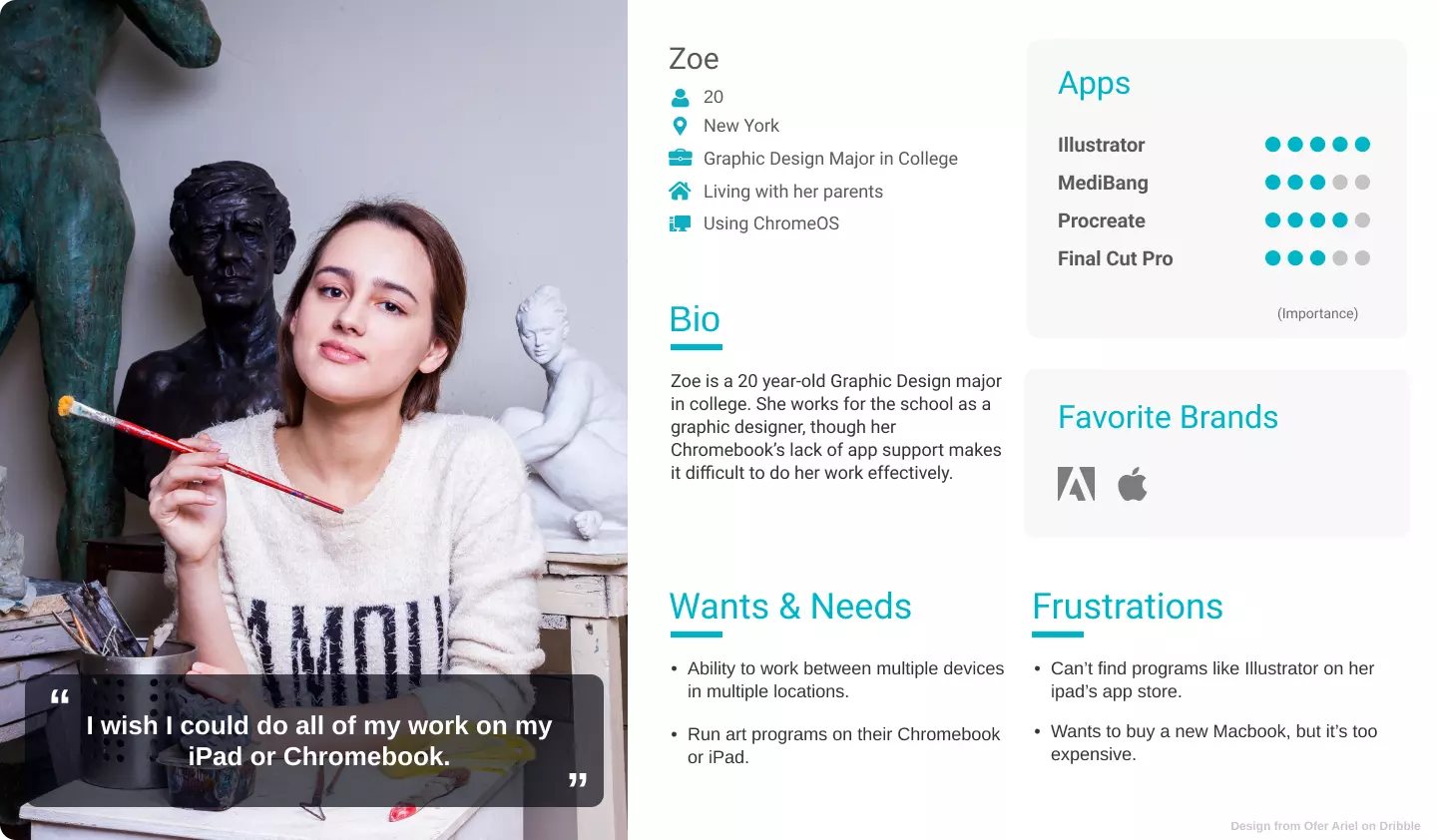

Empathy Maps
In order to gain a deeper understanding with our users and really connect with them, I created empathy maps. It was an effective way to, for lack of a better word, create empathy in my team, none of whom had ever seen this kind of thing before. Unlike the user personas, which focused more on the black-and-white needs of our users, these were more helpful for understanding people's general emotions and what they were thinking.
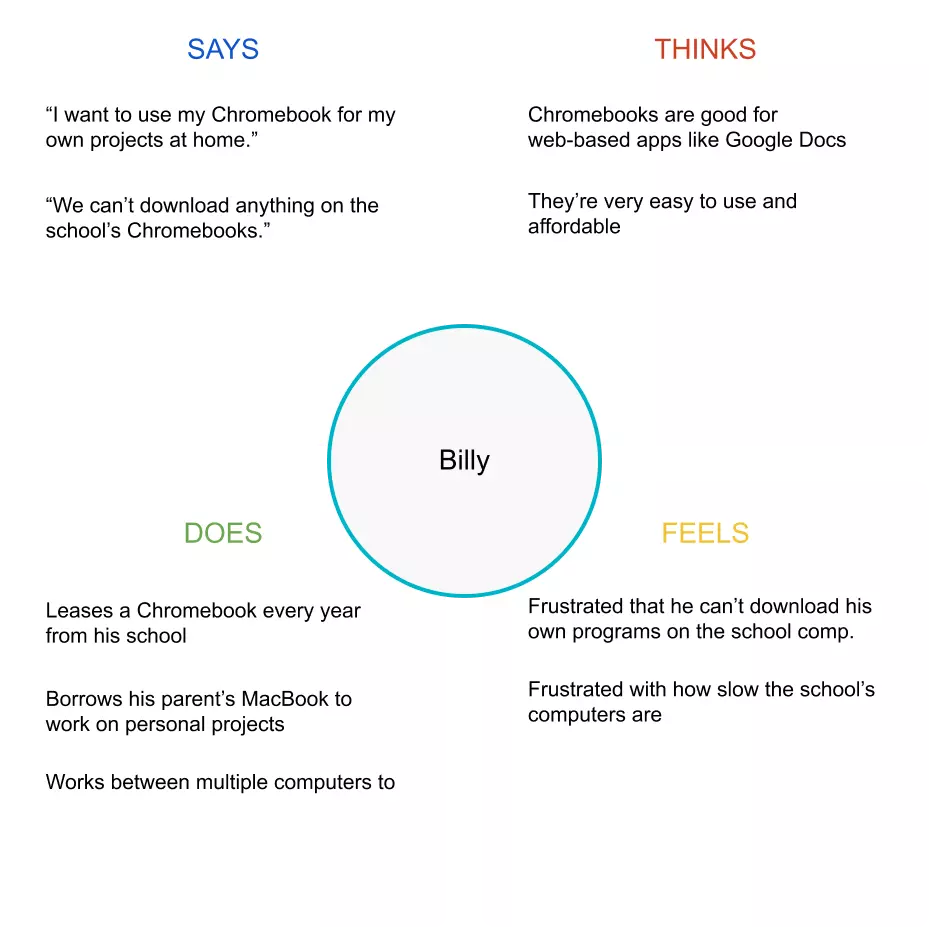
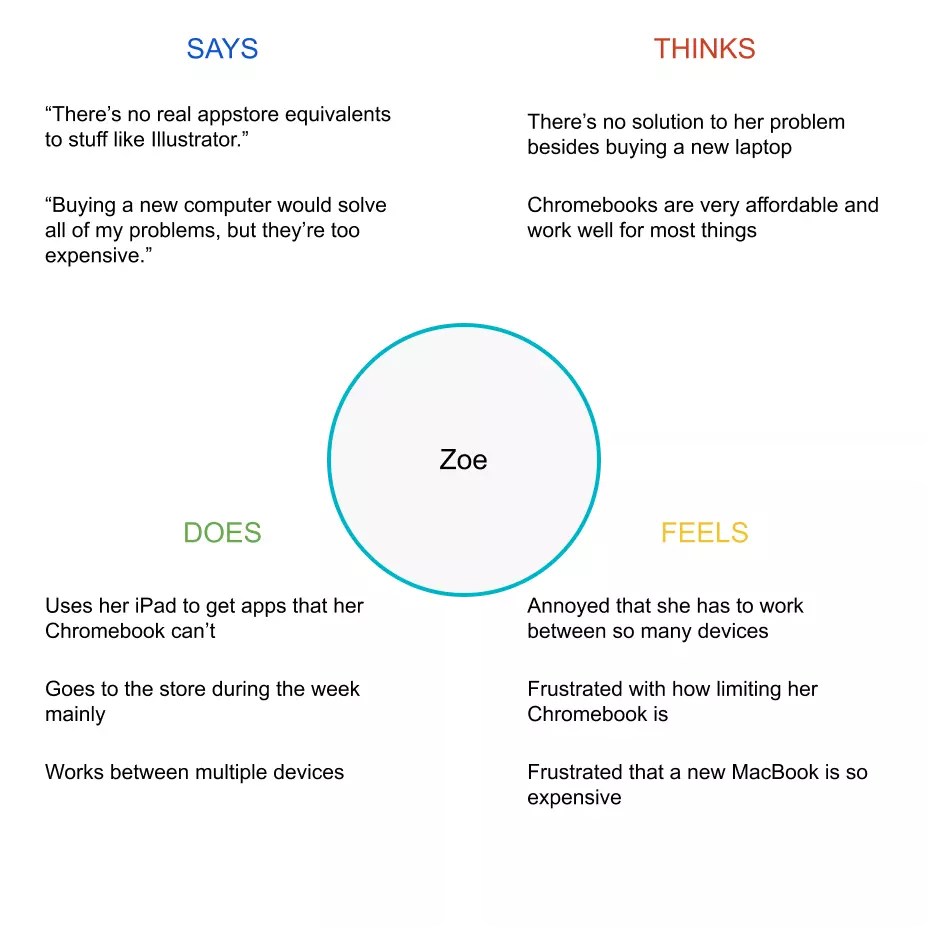
User Flow and Prototypes
Mapping out the user flow helped get an idea of how the website would actually function and what screens were needed for the prototype. This is a simplified example of how the flow looks.

Home page

Select a plan
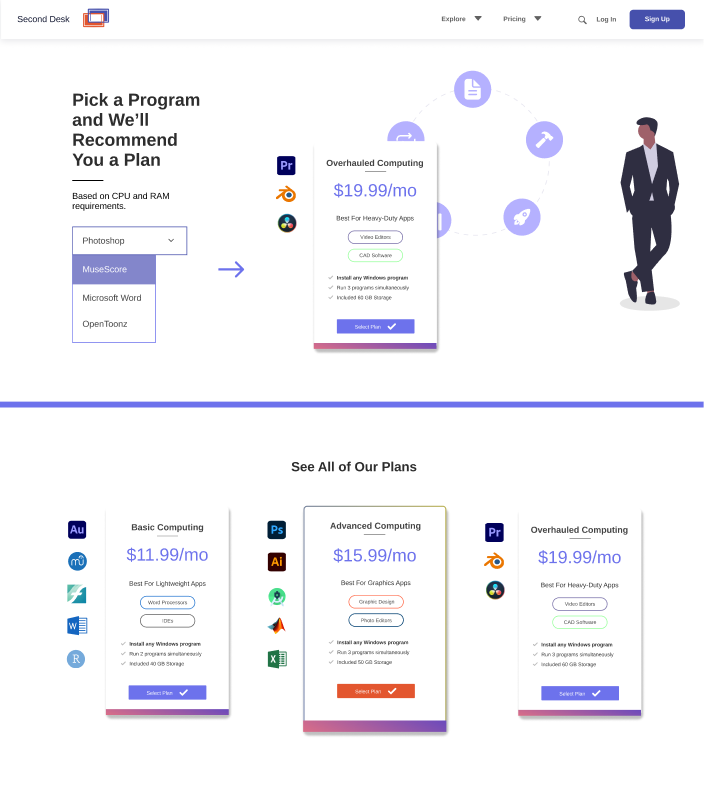
Desktop

Interactive Figma Prototype
Development
MVP
There are two main components to our product: the website and the remote servers. To get a working MVP going, we need to allow access to a remote desktop session directly through our website.
Our initial builds used a Windows 2019 EC2 instance from AWS and an in-browser remote desktop client called Myrtille. With it, we could access both remote applications like Inkscape and the full desktop of our server without ever needing a user download. We eventually constructed a React-based website that could connect users to specific programs and even offered a small library of downloaded apps to run.
Future Improvements
While testing our MVP, there were several roadblocks that we kept facing:
- Our remote desktop software was designed for simple office programs, not graphics-intensive ones. Low stream quality and low FPS was sometimes an issue.
- The AWS instance lacked a dedicated GPU, which would bottleneck the performance of some programs.
Finding new remote desktop software was our main priority, so after researching the stacks behind cloud gaming services like Google Stadia (who excelled at remote app streaming), we found that a WebRTC-based approach looked the most promising. Although, we are still in the process of looking for ways to improve performance on the server itself.
Project Reflection
Going into this project, I had little familiarity with UX principles, server management, or coding for the web. I was the only product developer and designer working on it for a number of months, which forced me to learn how to do everything from the ground up. I’ve made a lot of progress since starting and I’m continuing to learn more as the project keeps evolving.